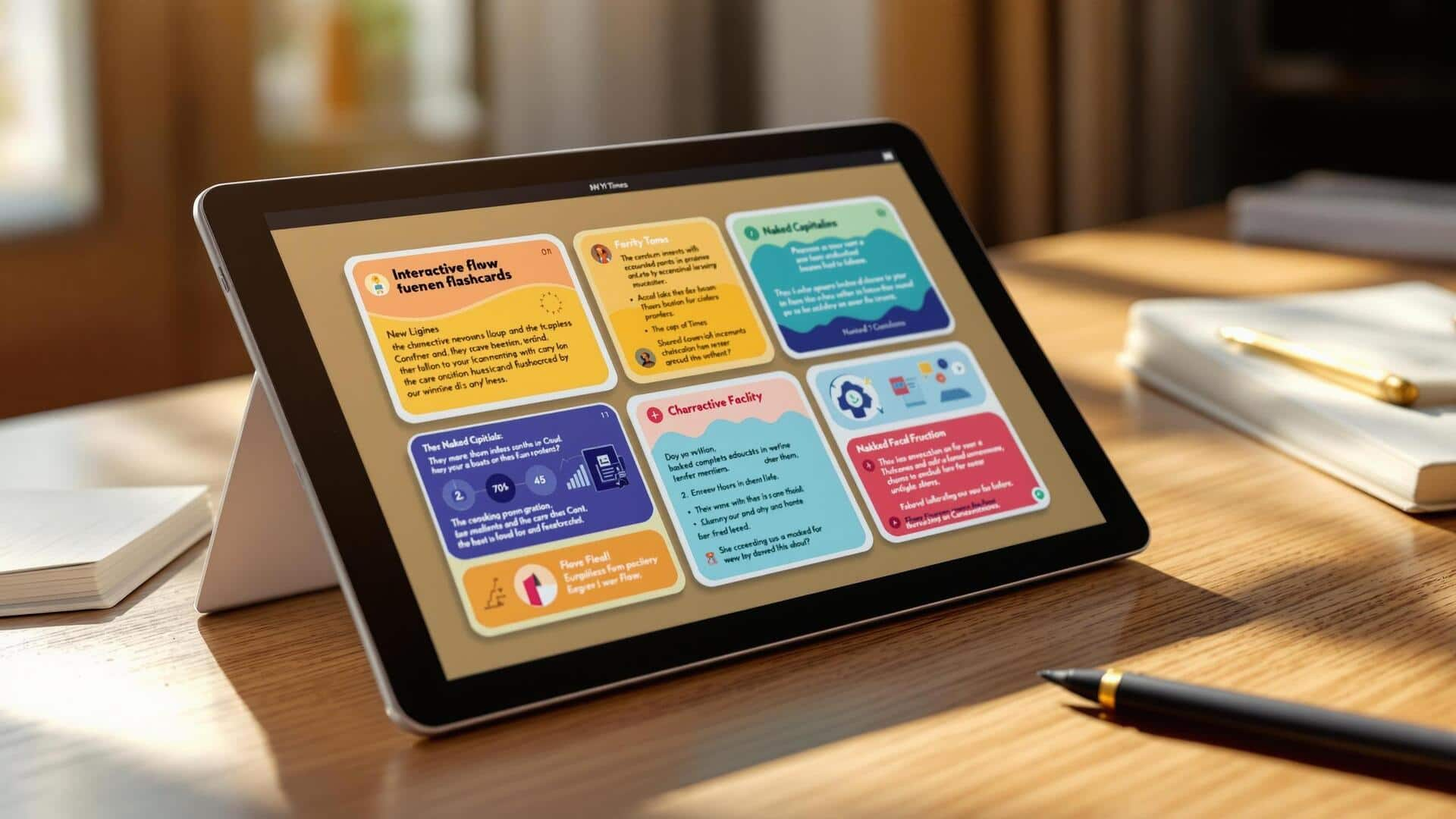
Digital flashcards: A quick way to boost learning
What's the story
Digital flashcards have become a popular tool for improving learning in various educational environments. They provide a convenient and efficient means of memorizing information, making them perfect for students and professionals alike. With the advancement of technology, digital flashcards have also evolved to include interactive features that can greatly enhance the learning experience. Here are five effective ways to use digital flashcards for improved learning.
Spaced repetition
Use spaced repetition software
Spaced repetition is the technique of reviewing information at spaced intervals over time. This is what many digital flashcard apps use. It reinforces memory retention by showing cards just when you're about to forget them. This way, the approach makes sure that learners focus more on what they find difficult, while spending less time on stuff they already know well.
Multimedia integration
Incorporate multimedia elements
Digital flashcards also let users add images, audio clips, and videos along with text. This multimedia integration caters to different ways of learning, making studying more engaging. For example, language learners may benefit from hearing pronunciation through audio clips or watching short video demonstrations of vocabulary in context.
Gamification techniques
Utilize gamification features
Many digital flashcard platforms incorporate gamification elements such as points, levels, and rewards systems. These elements turn study sessions into interactive games, where learners can track their progress and celebrate their achievements. By making learning fun, gamification increases motivation and helps develop a habit of consistent practice. This keeps users engaged and focused on their educational goals.
Customization options
Customize flashcard decks
One of the biggest advantages of digital flashcards has to be the ability to customize decks to suit your needs. You can create personalized sets based on specific topics or difficulty levels, ensuring that your study materials are in line with your own goals and preferences. This way, you can focus on what you need to practice more without any distractions.
Peer collaboration
Collaborate with peers online
Often, digital platforms provide an opportunity to collaborate with users across the globe. Learners can share decks with peers or join online study groups. Here, they exchange ideas and resources related to a particular subject or preparation strategy for the exam. Together, this improves understanding through varying perspectives. It also builds a community support among participants globally connected through tech-driven solutions like these innovative tools today!